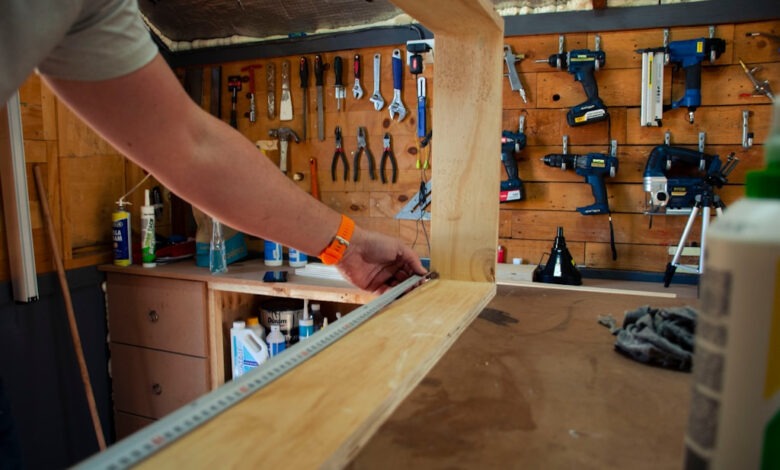
Second Fix Joinery Explained: Costs and Timeline
Second Fix Joinery Explained: Costs and Timeline
Second fix joinery is a crucial phase in construction and renovation projects, focusing on the finishing elements that enhance the appearance and functionality of a space. Unlike the first fix, which involves structural installations, second fix joinery includes components that are visible and usable within the completed structure. These elements demand precision, high-quality craftsmanship, and coordination between multiple trades to ensure top-tier results. Understanding what second fix joinery involves, how long it takes, and what determines its cost can help stakeholders plan effectively and avoid unnecessary delays or expenses.
What Is Second Fix Joinery?
Second fix joinery refers to the stage in construction or refurbishment when all visible woodwork is installed after plastering, wiring, and plumbing have been completed. At this point, the building’s shell is finished, and the joinery elements contribute to the interior’s final aesthetics and functionality. Common activities include fitting internal doors, skirting boards, architraves, staircase components, fitted furniture, and kitchen cabinets.
This phase is often executed by highly skilled joiners, as attention to detail is critical. Due to its position in the project timeline, second fix joinery must be coordinated carefully to align with the finishing touches from other trades like painting or flooring. Proper sequencing ensures both durability and aesthetic appeal with no need for costly rework. Accuracy, refined finishes, and seamless integration are essential features of well-executed second fix joinery.
Common Types of Second Fix Joinery
The range of second fix joinery work depends on the project’s complexity and design specifics. However, several components are standard in most builds. These elements enhance usability and visual appeal while adding value to the property.
Some of the most frequently installed second fix joinery elements include:
Internal doors – hung after painting and flooring to avoid damage and ensure a clean finish.
Skirting boards – cover the joint between walls and floors, serving both functional and decorative roles.
Kitchens and fitted cabinetry – integrated into the home’s layout and requiring precise joinery to accommodate appliances.
Window boards and sills – offering a finished look and contributing to insulation.
Staircase balustrades and handrails – ensuring safety and providing architectural character.
For those managing complex projects or unfamiliar with cost planning, targeting professional support is advisable. One reliable source of guidance is estimedes.co.uk/en – offering professional estimating services for construction projects. Their expertise helps prevent underquoting and promotes accurate project scheduling, particularly beneficial during the detailed and often unpredictable second fix stage.
Factors Influencing Second Fix Joinery Costs
Several variables can impact the overall cost of second fix joinery. Material selection is often the most obvious contributor. Hardwood elements, such as oak or walnut, will cost significantly more than softwoods like pine. Additionally, bespoke joinery, which includes custom-built cabinetry or uniquely designed staircases, demands more time and labor, increasing prices correspondingly.
Labor costs are another major factor. Highly skilled tradespeople generally charge more due to the precision required in installation. Complexity and the number of joinery elements involved also affect pricing. For instance, a high-end residential renovation with multiple built-in units will be more expensive than a simple office fitout with minimal joinery. The level of finish desired directly correlates to cost, as premium finishes need experienced craftsmanship.
Typical Timeline for Second Fix Joinery Installation
The timeline for completing second fix joinery varies depending on the project’s scale, availability of materials, and the condition of preceding work. On a standard residential property, second fix joinery may take between one and three weeks. Delays in earlier construction phases, such as delayed plaster drying or electrical wiring issues, can push back the start time for joinery installation.
Project coordination is key to staying on schedule. The process must follow a clearly defined sequence, beginning with door installation and structural woodwork, followed by detailed fittings like skirting boards and built-in furniture. Efficient scheduling and supplier management reduce the risk of project delays. When working with professional estimators like those at estimedes.co.uk/en, stakeholders can benefit from data-backed projections and avoid common pitfalls that prolong second fix work.
Tips for Managing Your Second Fix Joinery Project
Maintaining control over a second fix joinery phase requires a combination of proper planning, reliable expertise, and attention to detail. Begin by selecting trusted suppliers and tradespeople who understand the importance of quality finishes and can work cohesively with other contractors on site. Clearly defined project scopes and realistic schedules are key components of success.
Clients should insist on transparent cost estimates from the outset. Utilizing third-party services such as estimedes.co.uk/en allows for comprehensive cost breakdowns and ensures financial preparedness at every stage. This is particularly important for larger-scale projects or for developers managing multiple contractors.
Finally, quality control is essential. Regular site inspections, coupled with open communication between all involved trades, help to maintain consistency and meet timeline expectations. Remember, meticulous joinery work can significantly elevate the look and feel of a space, so never rush the process.



